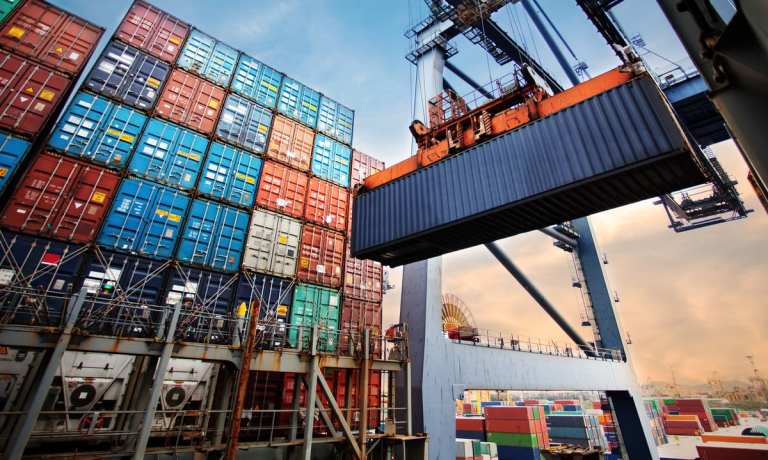Helping Firms Make The Leap Into Digital Shipping Container Procurement

When considering the digital B2B commerce revolution, shipping containers probably don’t come to mind as an exemplary driver of innovation.
But in a recent conversation with PYMNTS, Aad Storm, CEO of Eveon Containers, pointed to the industry data to put the concept of container procurement into perspective.
“There are about 45 million containers around the world, and they’re making about 200 million trips a year,” Storm said. “A third of those trips are empty.”
The shipping container is an unsung yet irreplaceable instrument in global trade, key to the movement of goods that keep the economy moving and growing. Yet despite a high volume of containers in circulation and a large number of inefficiencies, the act of buying and selling these containers has remained largely offline and manual.
It’s a massive shortcoming and, as Storm explained, a major opportunity for modernization. But just as with other product categories in the B2B eCommerce sphere, easing buyers and sellers of shipping containers into an all-digital ecosystem will require some novel approaches.
Bringing Procurement Online
There are plenty of requirements for a B2B eCommerce platform across all product categories to gain traction and achieve success. Industry-specific understanding of the market is key to promoting transparency and ease-of-use, while identifying the key friction points of the traditional ways B2B trade and B2B payments are conducted is the first step to addressing those pain points through digitization.
For Eveon, an emphasis on customer experience became essential.
“The number one challenge is for customers to feel at ease procuring shipping containers in a fully-digital environment,” Storm said. “It’s a category people are used to buying from known parties. You negotiate over the phone, maybe there’s an account manager that comes by to visit you — it’s used to being very personal and traditional.”
Whether a result of COVID-19 travel and gathering restrictions or a desire to accelerate and streamline the purchase-to-pay workflow, the need to collaborate with in-person sales representatives is waning for many firms.
A B2B eCommerce platform might be able to ease procurement pain points by removing some of the most friction-filled processes from the buying experience altogether. Yet Storm said he quickly recognized end users’ need to preserve some of those workflows.
In Germany, the platform’s first market, Storm noted that buyers still required a high volume of documentation. Even though the platform presented the price of containers clearly — an effort to bring greater transparency and confidence to both buyers and sellers — end users still needed documentation for quotes, for example.
It led to a recognition that while eCommerce solutions might be able to wholly digitize procure-to-pay experiences, some of the offline, traditional workflows in the back office must be honored in order to provide the level of assurance businesses need when embracing digitization for the first time.
Payments Flexibility
Embracing user feedback and prioritizing platform flexibility enables a B2B eCommerce platform like Eveon’s to shift and adjust to market demands, a characteristic likely to prove useful as it expands into new markets like the U.S.
It’s also an important part of servicing a diverse user base. The purchasers of these shipping containers can be anyone from a car dealership that needs the containers to store tires or an agricultural firm in need of a container to export crops.
Everyone’s preferences and requirements are different, a reality that must be reflected in how these platforms facilitate the B2B payment of the containers being purchased. Storm said choice is imperative in this scenario, adding that the firm works with a third party to integrate card, ACH, PayPal and other payment methods.
“People may choose PayPal because of a feeling of security,” Storm explained. “When you make a payment of a few thousand dollars, you want to be sure you get the goods through and you receive the containers. The next time, they may feel more confident using another payment method. The thing you have to offer is choice.”
That focus also led the platform to support invoice purchases, another example of how a B2B eCommerce platform that can reduce inefficiencies by facilitating direct and on-demand payment at checkout may still have to adhere to legacy workflows. Invoicing is critical for some business purchasers that require the documentation to move through a purchase approval and payment flow.
But whether an eCommerce platform is digitizing an existing legacy workflow or replacing it altogether, the focus remains on user experience, Storm said.
“The key to success is true customer focus,” Storm noted, by “trying to understand how we can make life more simple for them. It’s not a challenge so much as it’s a mindset.”